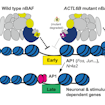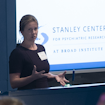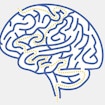Evan Feinberg is an assistant professor in the Department of Anatomy and a member of the Kavli Institute for Fundamental Neuroscience and the Center for Integrative Neuroscience at the University of California, San Francisco.
He received his undergraduate degree in biochemical sciences at Harvard University, where he worked with Craig Hunter on the molecular mechanisms underlying systemic spread of RNA interference in C. elegans. His doctoral studies were conducted at The Rockefeller University in the laboratory of Cori Bargmann, where he developed GRASP (GFP Reconstitution Across Synaptic Partners), a method that enables in vivo visualization of synapses between defined neurons.
Feinberg pursued postdoctoral training at Harvard University with Markus Meister, where he performed the first two-photon calcium imaging study of the superior colliculus and discovered its columnar functional architecture. The Feinberg lab studies sensorimotor integration using optical, genetic and behavioral methods in mice and has received research support from the E.M. Ziegler, Brain & Behavior Research and the Whitehall Foundation in addition to receiving a Klingenstein-Simons Fellowship Award.








